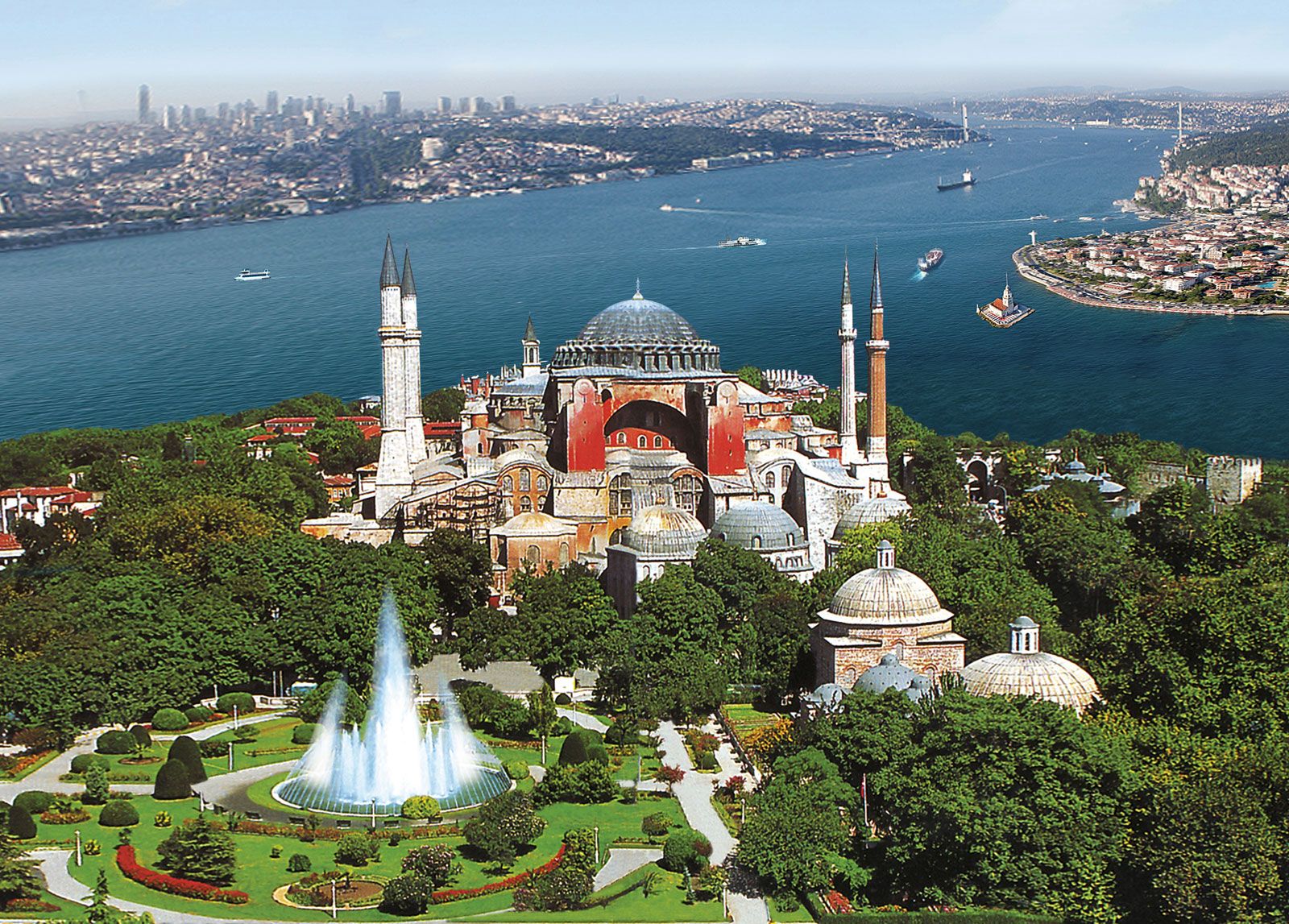Hagia Sophia: History, Structure, And Survival Of An Icon

Table of Contents
A Glimpse into the Byzantine Era: The Hagia Sophia's Genesis
The Hagia Sophia's story begins in the heart of the Byzantine Empire under the ambitious reign of Emperor Justinian I. Justinian, driven by a desire to create the greatest cathedral in the world, commissioned its construction in the 6th century. This wasn't simply a building project; it was a statement of imperial power and religious devotion.
-
Architectural Innovations: The construction of the Hagia Sophia presented unprecedented engineering challenges. The massive dome, a feat of Byzantine engineering, required innovative solutions. The use of pendentives, triangular curved supports, allowed the dome to rest on a square base, a groundbreaking architectural achievement. The building also incorporated massive buttresses and arches, all meticulously designed to ensure its structural integrity.
-
Artistic Splendor: The interior was lavishly decorated with breathtaking mosaics and frescoes. These artistic masterpieces, depicting religious scenes and imperial figures, showcased the height of Byzantine artistic skill. These mosaics, many of which have survived centuries of change, offer invaluable insights into Byzantine religious beliefs and artistic practices.
-
Center of Power: The Hagia Sophia served as more than just a place of worship. It was the central hub of the Byzantine Empire’s religious and political life, a place where emperors were crowned and religious ceremonies were conducted. Its significance within the Byzantine Empire cannot be overstated.
Ottoman Transformation: Hagia Sophia as a Mosque
The Ottoman conquest of Constantinople in 1453 marked a turning point in the Hagia Sophia's history. Sultan Mehmet II, after conquering the city, ordered its conversion into a mosque. This transformation didn't erase the building's Byzantine heritage but rather layered a new chapter onto its rich history.
-
Architectural Adaptations: The conversion involved several key architectural modifications. Minarets, slender towers from which the call to prayer is made, were added to its exterior, becoming iconic features of the mosque. A mihrab, a niche indicating the direction of Mecca, was incorporated to facilitate Muslim worship. Islamic calligraphy adorned the walls, adding another layer of artistic expression.
-
Preservation and Integration: Remarkably, many of the existing Byzantine features were preserved and integrated with the new Islamic elements. This harmonious blend of architectural styles is a unique testament to the Hagia Sophia's adaptability and its capacity to embrace different cultural and religious influences.
-
Cultural Impact: The Hagia Sophia's transformation significantly impacted the cultural landscape of Istanbul, solidifying its position as a central location for the Ottoman Empire and representing the city's changing identity.
The Hagia Sophia's Structure: An Engineering Masterpiece
The Hagia Sophia's structural ingenuity continues to amaze engineers and architects today. The sheer scale of the building and the innovative techniques employed in its construction stand as a testament to the skill of Byzantine engineers.
-
Pendentives and the Dome: The most striking feature is undoubtedly the massive central dome. Its support system, employing pendentives, is a key element in its structural stability and is still studied and admired for its brilliance.
-
Materials and Durability: The builders used a variety of materials, including brick, stone, and marble, chosen for their durability and ability to withstand the test of time. This careful selection of materials is a factor in the Hagia Sophia's remarkable survival.
-
Spatial Design: The spatial design of the Hagia Sophia is masterfully crafted to create an awe-inspiring atmosphere. The vast interior space, bathed in light streaming through its windows, inspires a sense of reverence and grandeur.
-
Modern Preservation: Today, ongoing preservation efforts focus on maintaining the Hagia Sophia's structural integrity and safeguarding its historical significance for future generations. Careful restoration and conservation techniques are crucial to ensuring the building's longevity.
Survival and Legacy: The Hagia Sophia's Enduring Impact
The Hagia Sophia's survival through centuries of political and religious upheaval is itself a remarkable achievement. Its designation as a UNESCO World Heritage Site underscores its global importance.
-
UNESCO World Heritage Status: This prestigious recognition highlights the Hagia Sophia’s universal value as a symbol of cultural heritage and architectural innovation.
-
Tourism and Economic Impact: Today, the Hagia Sophia is a major tourist attraction, drawing millions of visitors annually and significantly contributing to Istanbul's economy.
-
Ongoing Debates and Challenges: Despite its importance, the Hagia Sophia remains a subject of ongoing debates, highlighting the complexities of preserving historical sites within a changing world. The ongoing discussions about its use reflect the building’s multifaceted significance.
-
Preservation for Future Generations: Continued commitment to preserving this magnificent structure is essential. The Hagia Sophia’s future hinges on the collaboration between experts, governments, and communities to ensure its longevity.
Conclusion:
The Hagia Sophia's journey, from its Byzantine genesis to its Ottoman transformation and its enduring legacy as a global icon, is a story of remarkable resilience and adaptation. Its innovative architecture, artistic splendor, and historical significance continue to inspire awe and wonder. Its survival through the ages demonstrates the power of human ingenuity and the enduring importance of preserving cultural heritage. Explore the wonders of the Hagia Sophia, discover the rich history of the Hagia Sophia, and witness the architectural marvel that is the Hagia Sophia – a true testament to human achievement. Learn more through further research, virtual tours, or, even better, a visit to Istanbul to experience this timeless icon firsthand.

Featured Posts
-
 Understanding Willie Nelson Key Facts And Highlights
Apr 29, 2025
Understanding Willie Nelson Key Facts And Highlights
Apr 29, 2025 -
 Adult Adhd Understanding Your Diagnosis And Moving Forward
Apr 29, 2025
Adult Adhd Understanding Your Diagnosis And Moving Forward
Apr 29, 2025 -
 Buying Capital Summertime Ball 2025 Tickets Avoid Scams And Resellers
Apr 29, 2025
Buying Capital Summertime Ball 2025 Tickets Avoid Scams And Resellers
Apr 29, 2025 -
 You Think You Have Adult Adhd Now What
Apr 29, 2025
You Think You Have Adult Adhd Now What
Apr 29, 2025 -
 How U S Companies Are Managing Costs In The Face Of Tariff Instability
Apr 29, 2025
How U S Companies Are Managing Costs In The Face Of Tariff Instability
Apr 29, 2025
